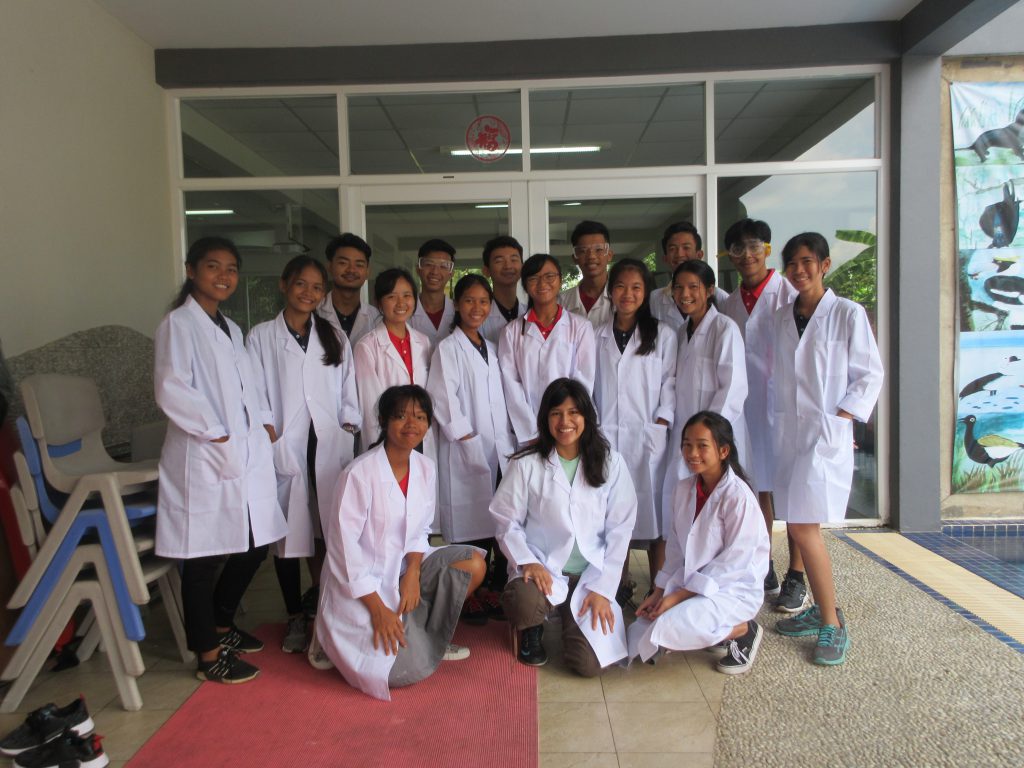In Chemistry class, I was introduced about color, light, and electromagnetic spectrum. To better understand these concepts and make chemistry more interactive, we did an experiment about compounds element light and wavelength.
In the flame lab, I took 5 different elements and excited with the flame to see the changes in the flame color from the chemicals reaction. Below was my lab report for the experiment.
Objective: To observe the relationship between various elements and their emission spectrum.
Introduction:
- Why do we see colors of the flame in the experiment?
- We see colors in the flame test because when the elements get burn, it then becomes excites the elements electrons and move to a higher energy orbital level (called the excited state). Then, excited electrons release energy as photons of light in order to get back to the ground state. Therefore the difference between the excited state energy and the ground state energy allow seeing different colors because of its frequencies of energy are emitted.
- How will we be testing the substances qualitatively?
- We will be testing the substances qualitatively by observing the color of the fire after adding the elements and use the wavelength and frequency level chart in Google Classroom and google search.

Procedure:
- Light the Bunsen burner (turn the gas on so you can just hear it, then use the striker)
- Place the wood splint for each compound into the flame using tongs or tweezers- ONE AT A TIME!
- Take note of the color of the flame and return the wood splint to the solution.
- CLEAN UP YOUR STATION! Carefully put the stoppers back on the solutions! Make sure the station looks like it did when you started! Let me know if you need new splints!
- Wash your hands thoroughly before leaving the laboratory
Data Table: make a section of your lab labeled Data Table and make a data table similar to the one below to record your observations.
Compound |
The color of Flame (qualitative) |
Wavelengths of light (in Å) (quantitative) |
| Barium Chloride | Yellow | 590 – 560 nm |
| Calcium Chloride | Orange | 635 – 590 nm |
| Copper (II) Chloride | Green | 560 – 520 nm |
| Lithium Chloride | Magenta | 530 – 500 nm |
| Potassium Chloride | Lavender | 450 – 400 nm |
| Strontium Chloride | Red | 700 – 635 nm |
| Unknown #1 | Magenta | 530 – 500 nm |
Observation: As the different compounds were added to the flames, various colors were being displayed through the flame.
Discussion and Analysis:
- What observation did you make that allowed you to come up with the wavelengths for each chemical? What happened to the atom (and more specifically the electrons) that caused you to see that change?
- The observation that I made that allowed me to come up with the wavelengths for each chemical is to record the reactions when different elements are added. When the differents element gets burn, the atom (and more specifically the electrons) happened to excites the electrons and move the electrons to a higher energy orbital level (called the excited state). Then, excited electrons release energy as photons (wave) of light in order to get back to the ground state. Therefore the difference between the excited state energy and the ground state energy allow seeing different colors because of its frequencies of energy are emitted by atoms of the element.
- The unknown compound is one of the other six. Identify it and explain HOW you figured it out using the results of your experiment.
- The unknown compound is closest the Lithium Chloride compound because of its flames color. I observe the flame of the unknown compounds is magenta which is the same as lithium. Magenta has a wavelength range between 500 -530 nm.
Conclusion:
The two possible sources of error for this lab are the flame color that was being observed by me and is the effect of water that was used to make the elements stick. Our eyes are never near as precise as the spectroscope, this can lead to a misinterpretation of the wavelength of each compound. Second, water that was used to make the chemical stick onto the stick can affect the color the flame because of its reaction. One change that would be very beneficial is to have more compound to do experiment with because it gives more data for the lab person to analyze with. The other change that will help with more accurate data is to repeat each compound on the flame three times.

